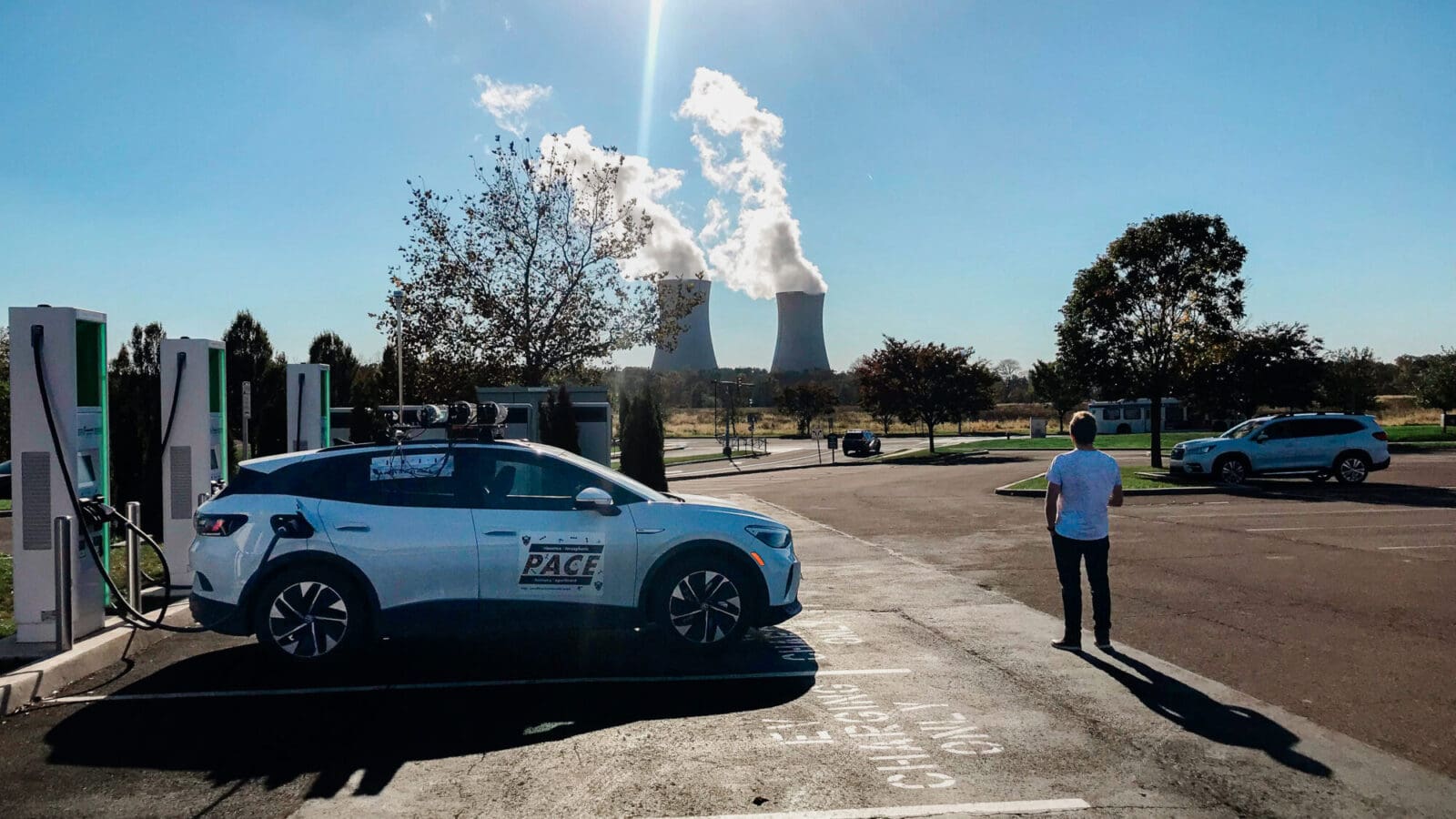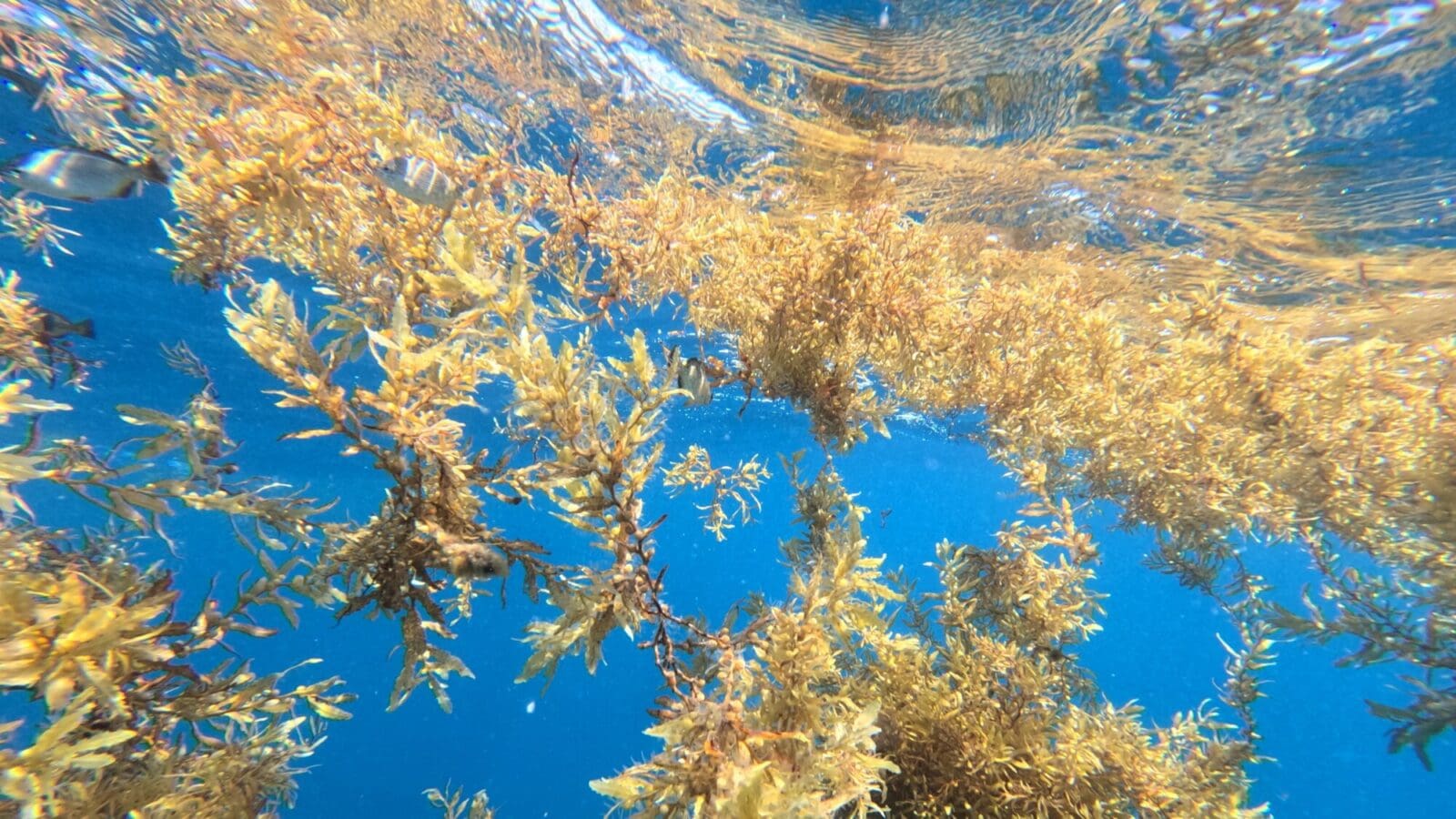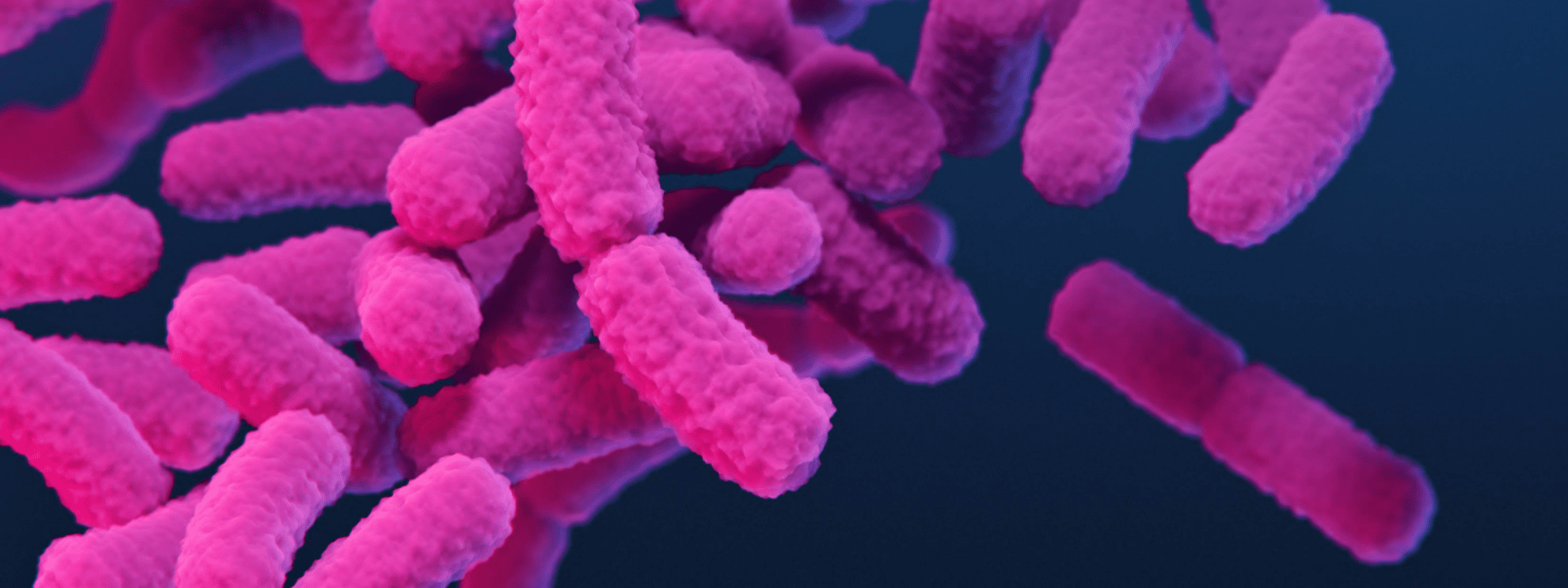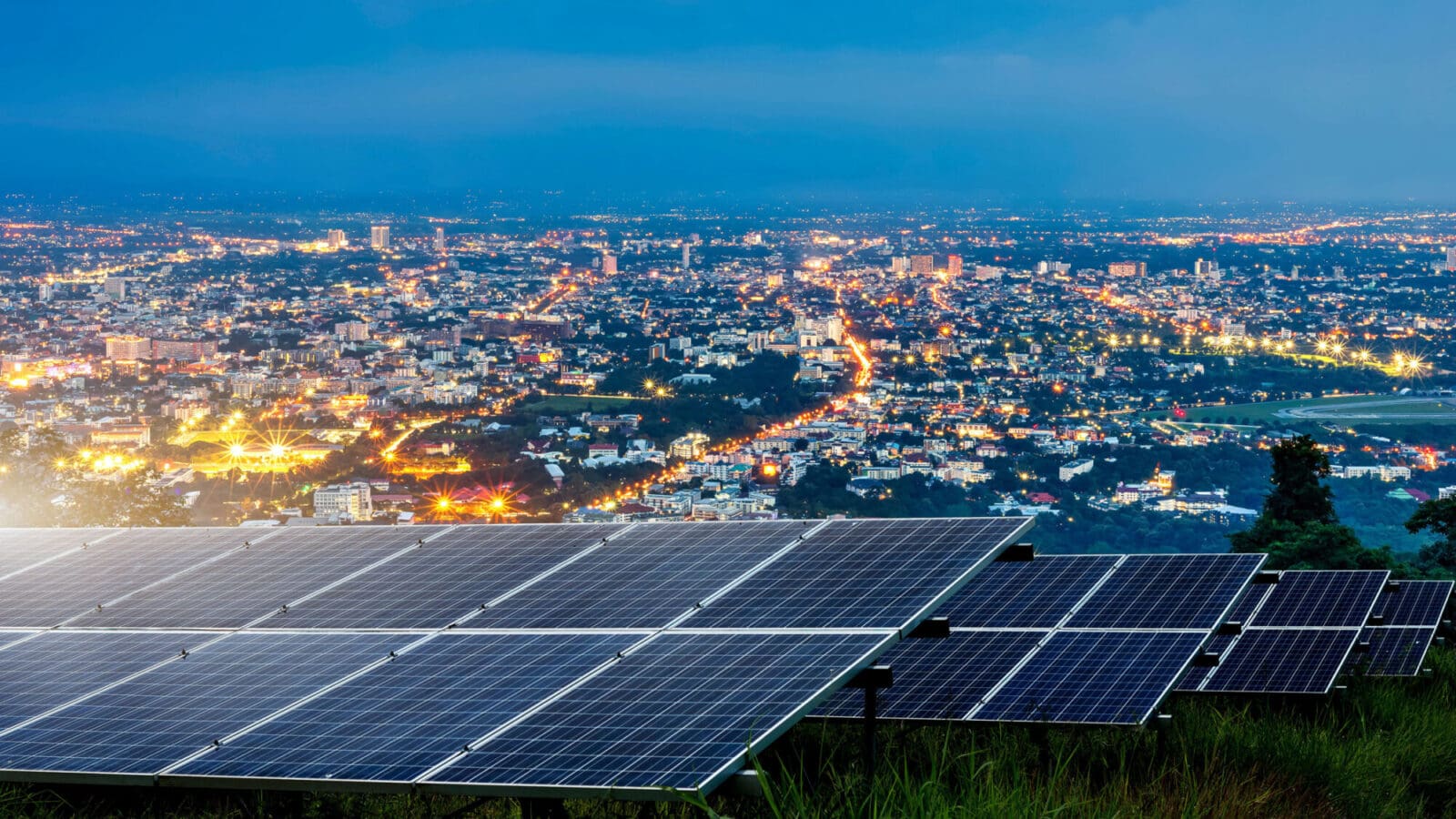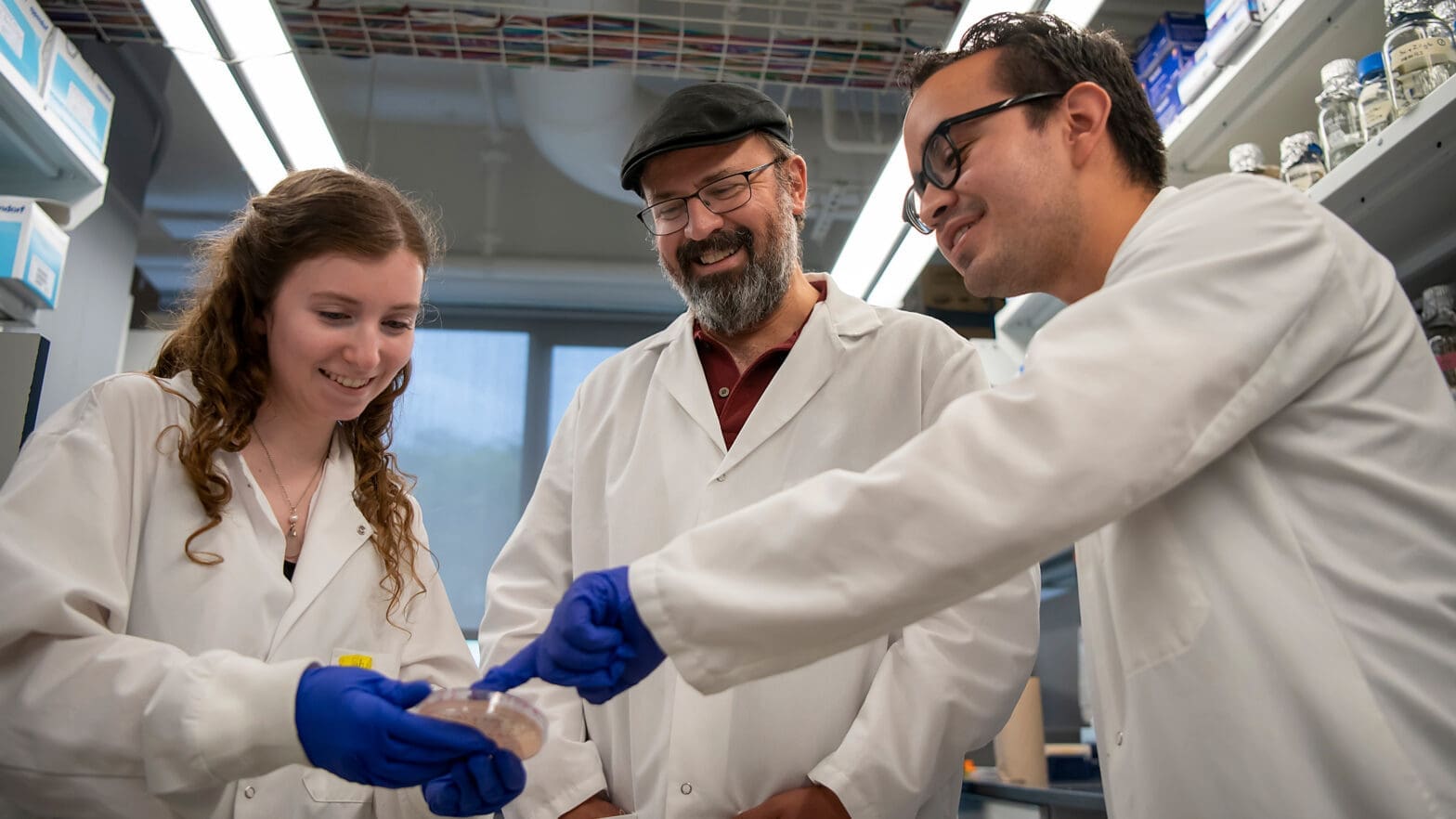
Transforming microbes into factories for the future
By
on
This article is from the Bioengineering: Unlocking mysteries, enabling impact issue of Equad News magazine.
“Our aim is to move away from petroleum and use living cells to create the fuels, drugs, and chemicals that we need,” said José Avalos, an associate professor of chemical and biological engineering and the Andlinger Center for Energy and the Environment. “Instead of extracting natural products from plants, which require land and fertilizer, we are interested in producing them with microorganisms.”
Much of Avalos’ current work involves yeast, the simple, single-celled organism behind bread and beer. His research team is pulling these ancient technologies into the 21st century, engineering processes that use yeast to create biofuels, industrial chemicals, and drugs.
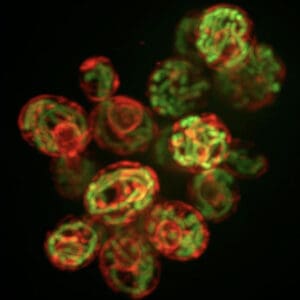
(green) and endoplasmic reticulum
(red) interacting. These are two key
organelles targeted in the Avalos lab for
chemical production. Image courtesy of
the researchers
They accomplish this by manipulating cellular metabolism to create microorganisms that produce desired chemicals and proteins. Their tools involve controlling space and time.
Time means controlling the sequence in which microorganisms turn on the genes required to produce chemicals. The key is optogenetics, the technique of introducing light-sensitive proteins into microorganisms. Optogenetics allows the researchers to turn chemical production on and off by shining lights into bioreactors.
At the same time, researchers control space by isolating areas for different steps of the metabolic process. They may cluster yeast strains, with each strain contributing a different chemical that acts as a step in a greater production. Or they may use cellular components, called organelles, for different processes in the cell.
“We can run a fermentation in which we have two or more strains that collaboratively work to produce a chemical of interest,” Avalos said. “Inside the cell, mitochondria and other organelles are separate areas where you can carry out reactions separate from the rest of the cell.”
The breadth of research lends itself to collaboration, and Avalos is working with research teams across the University. Among others, he partners with Clifford Brangwynne and Daniel Cohen on cellular condensates, Claire White on new biocements, Peter Jaffé on environmental cleanup, and Jared Toettcher on optogenetics.
“The holy grail is to establish closed-loop controls of metabolism,” he said. “Like setting the thermostat in your house: You set the optimal temperature, and it automatically controls your heater. In yeast, you set the operating conditions and the organism gives you what you need.”
